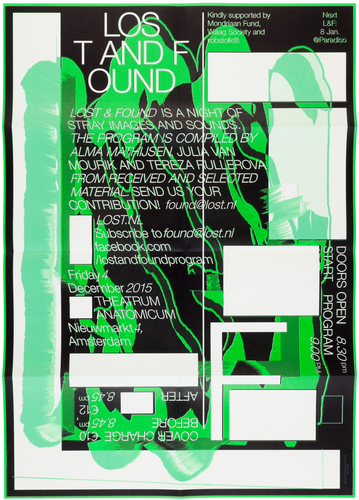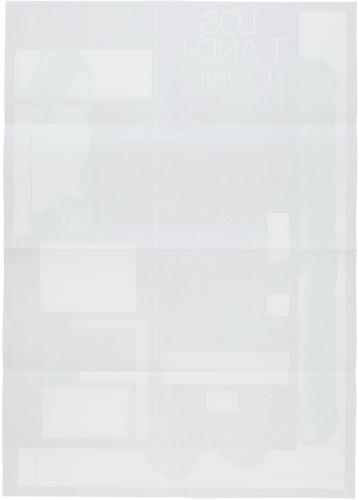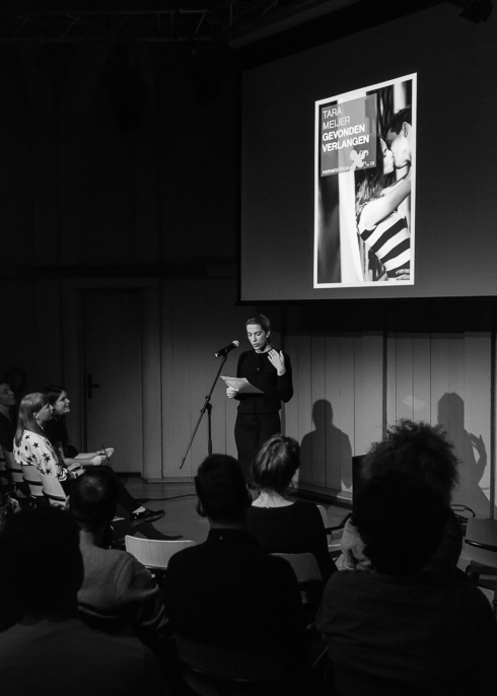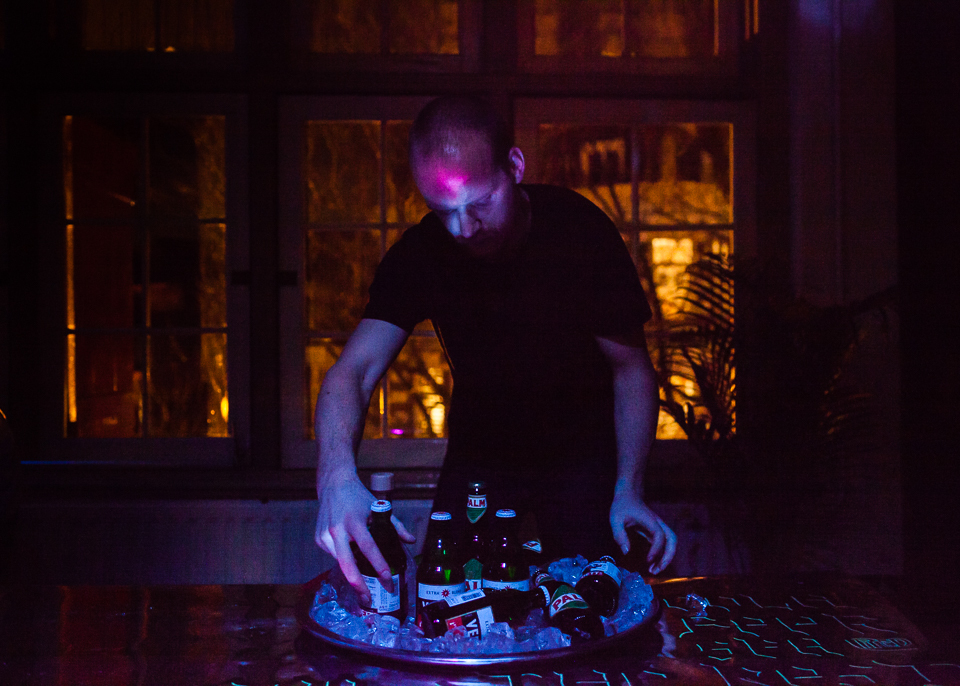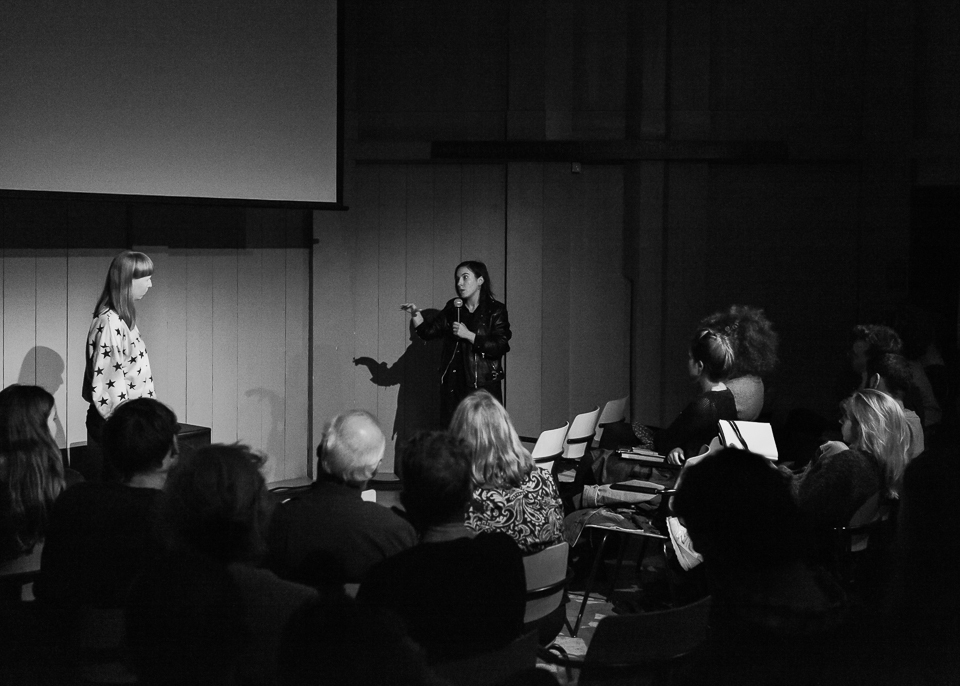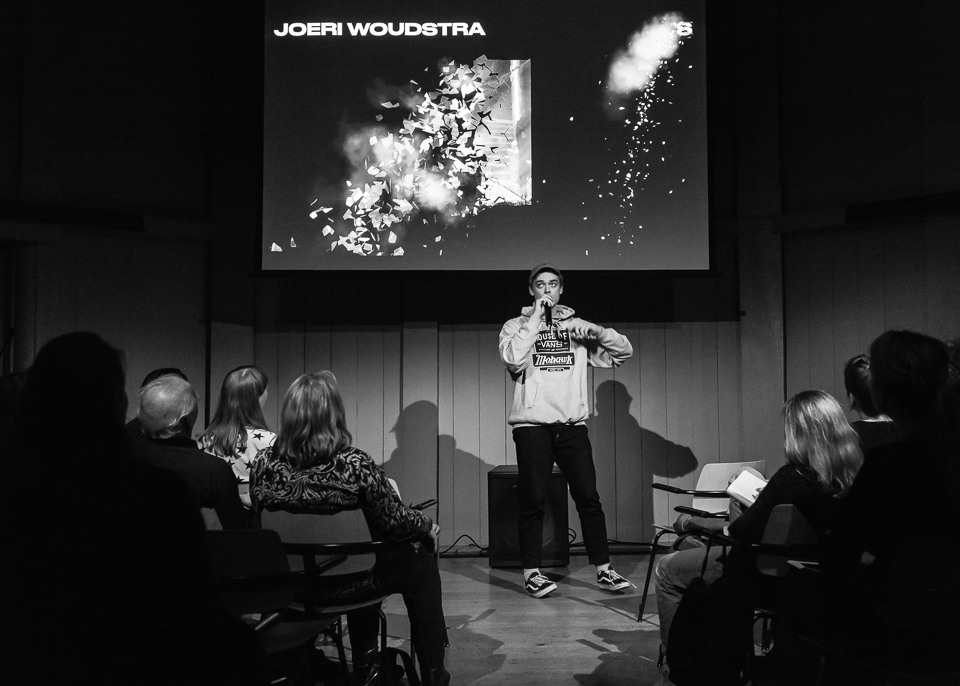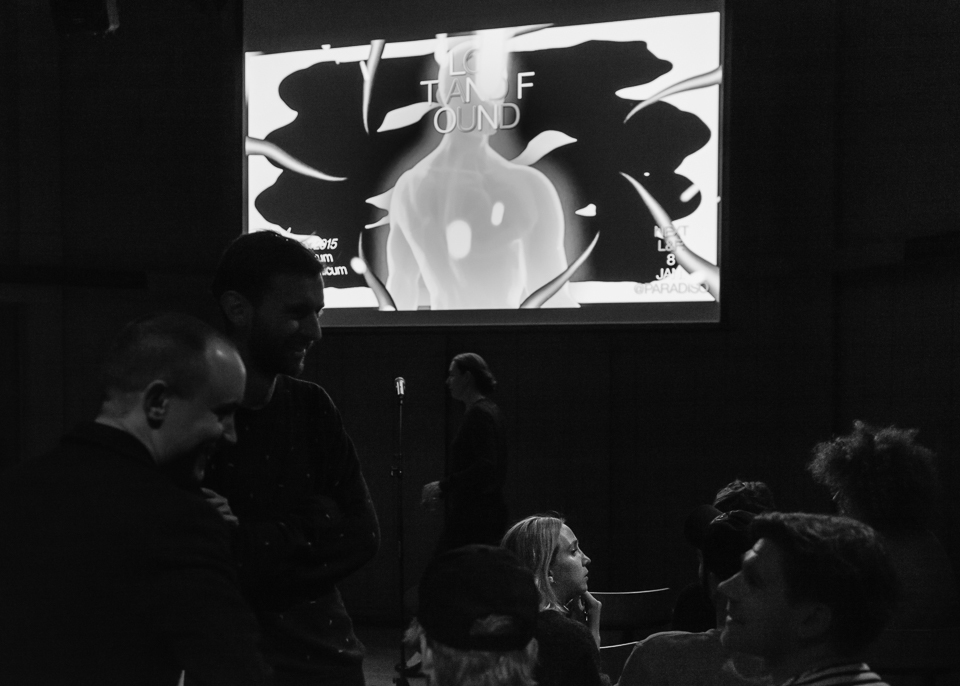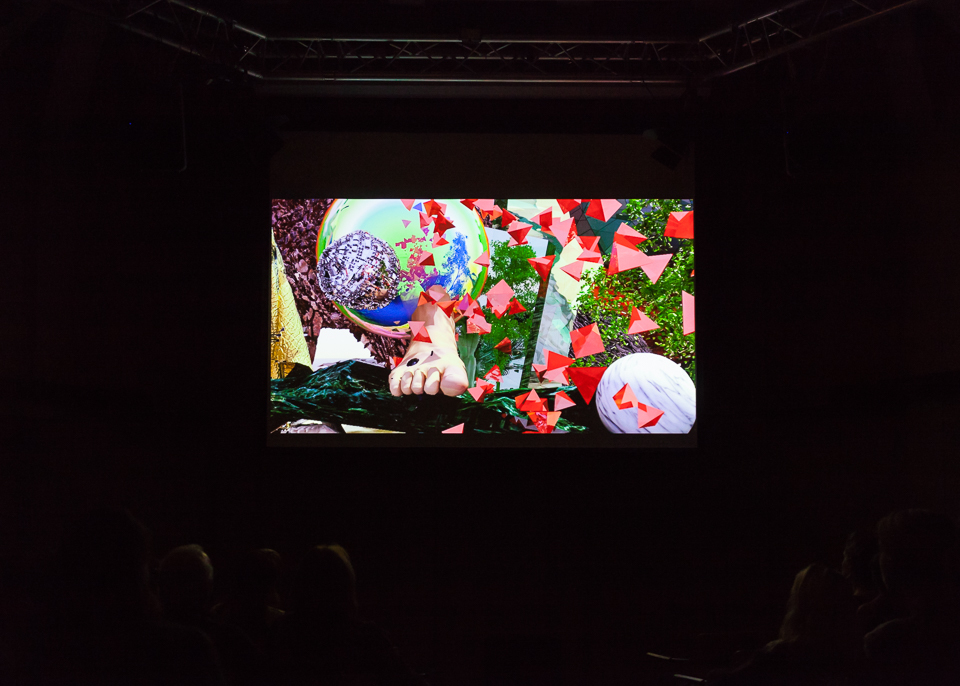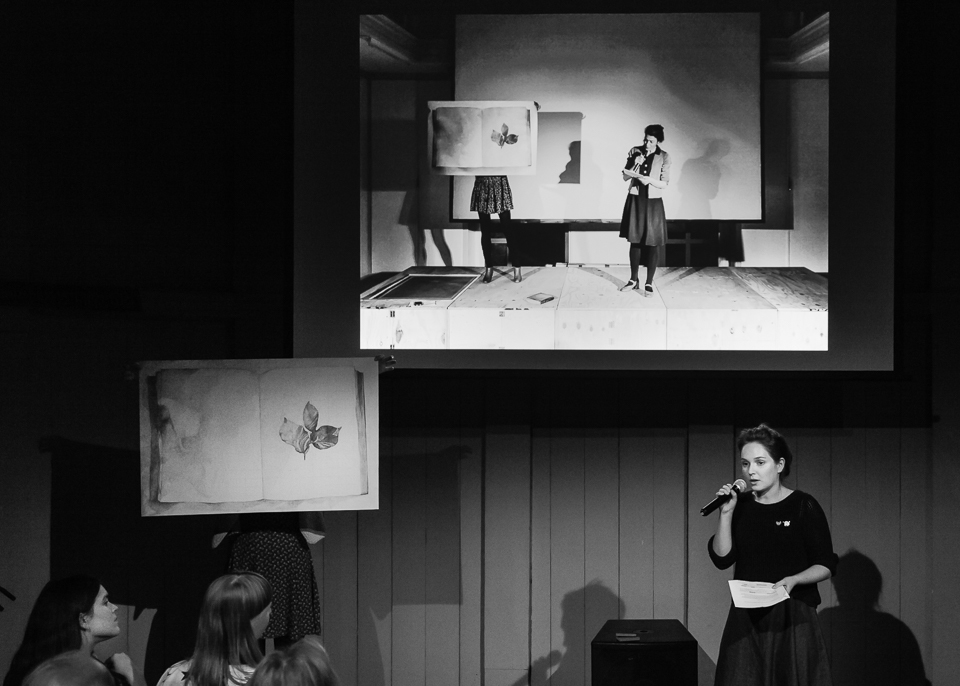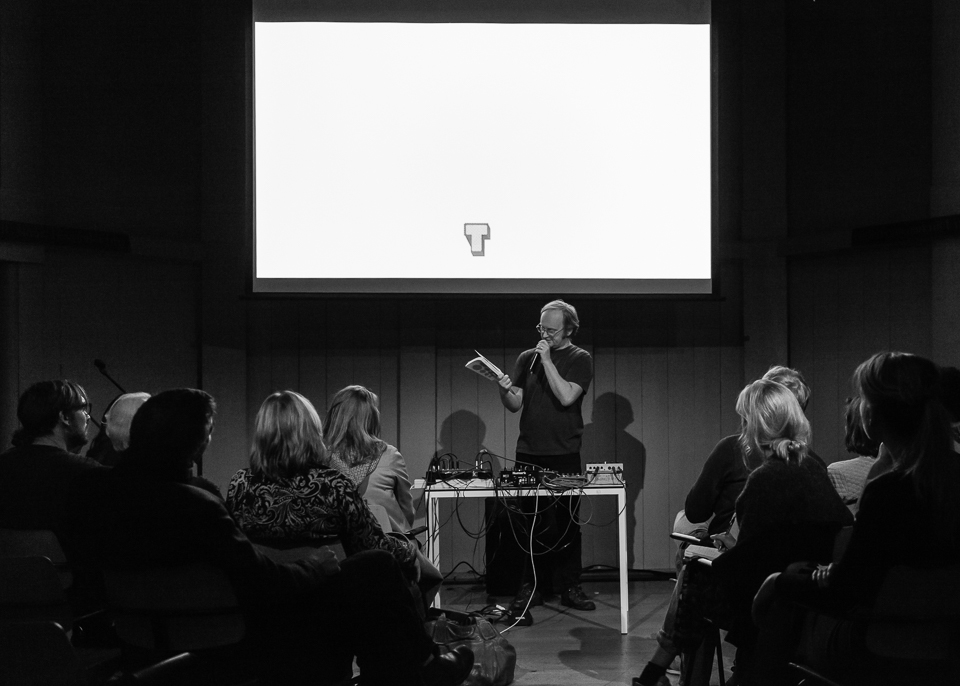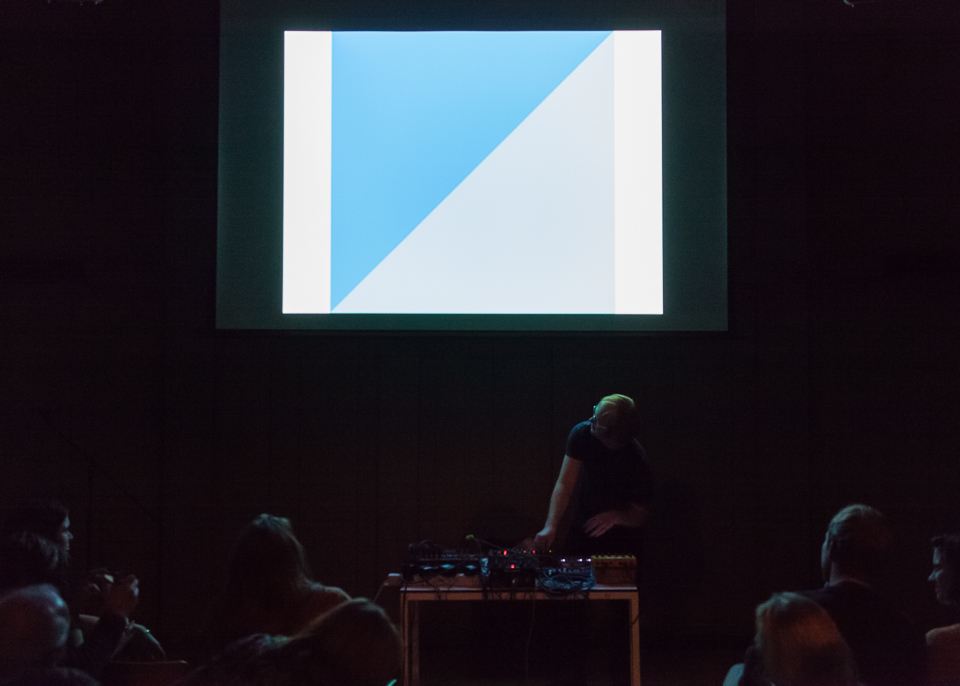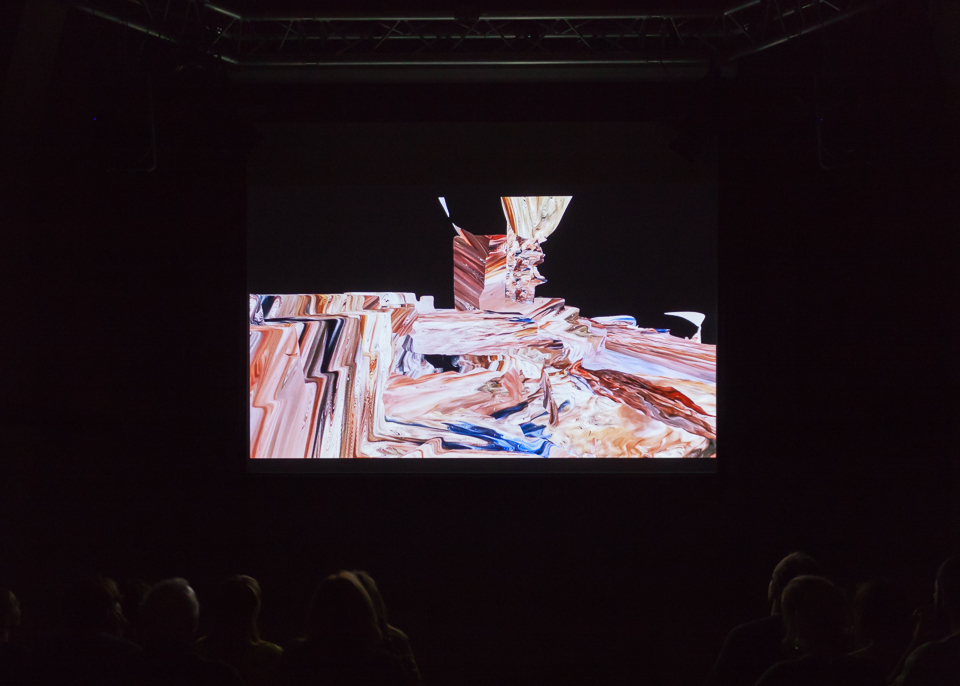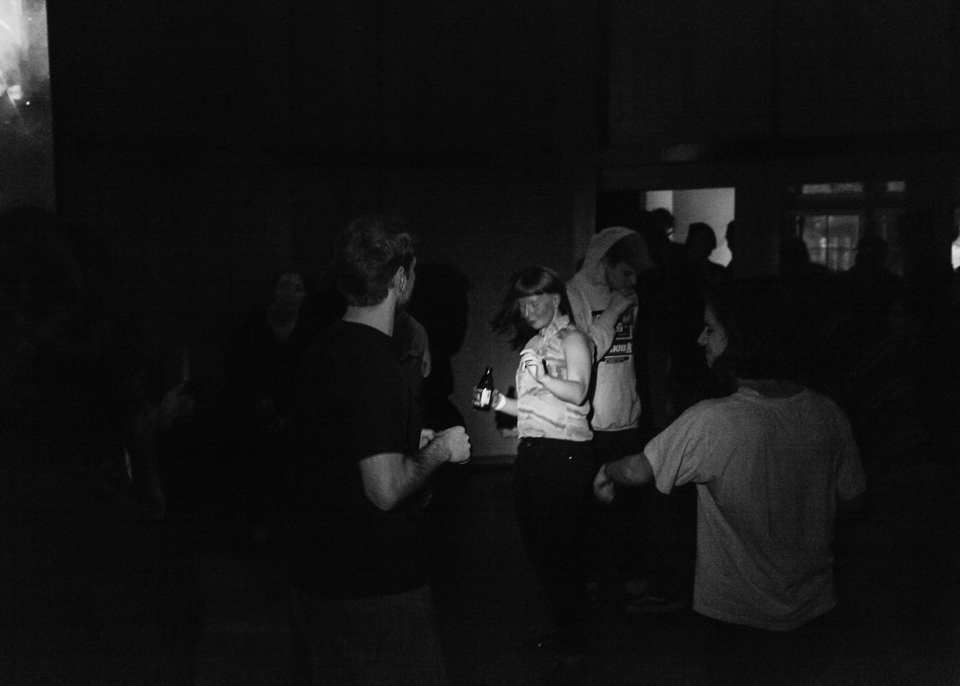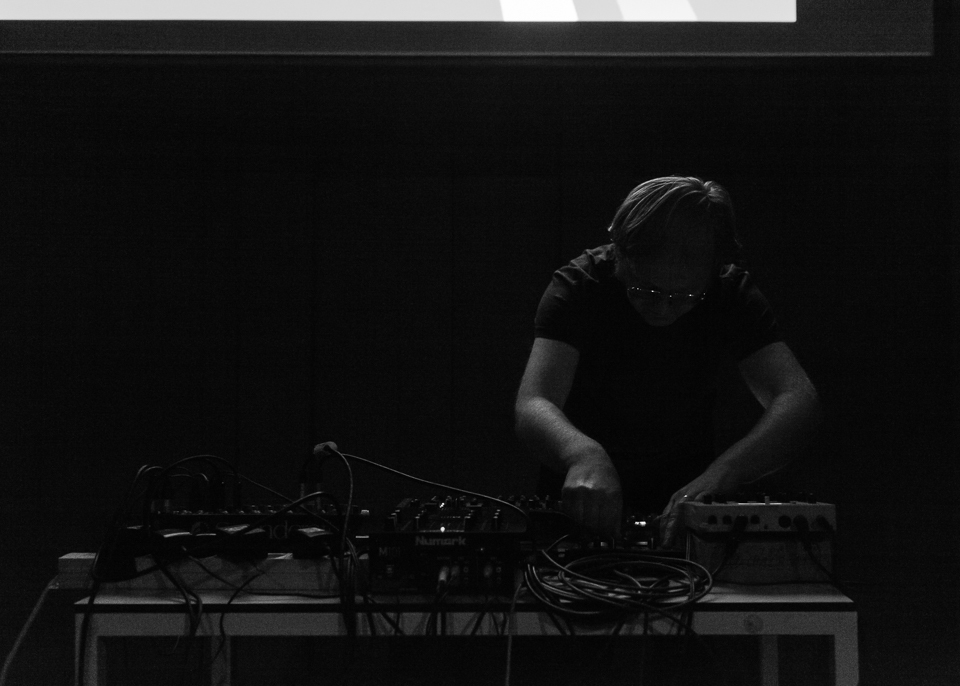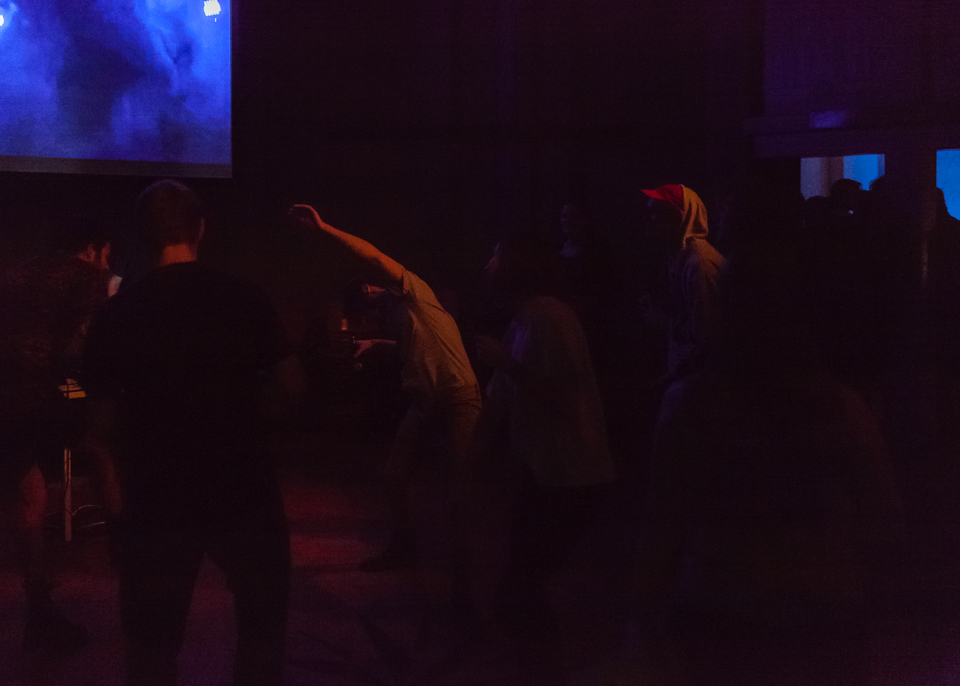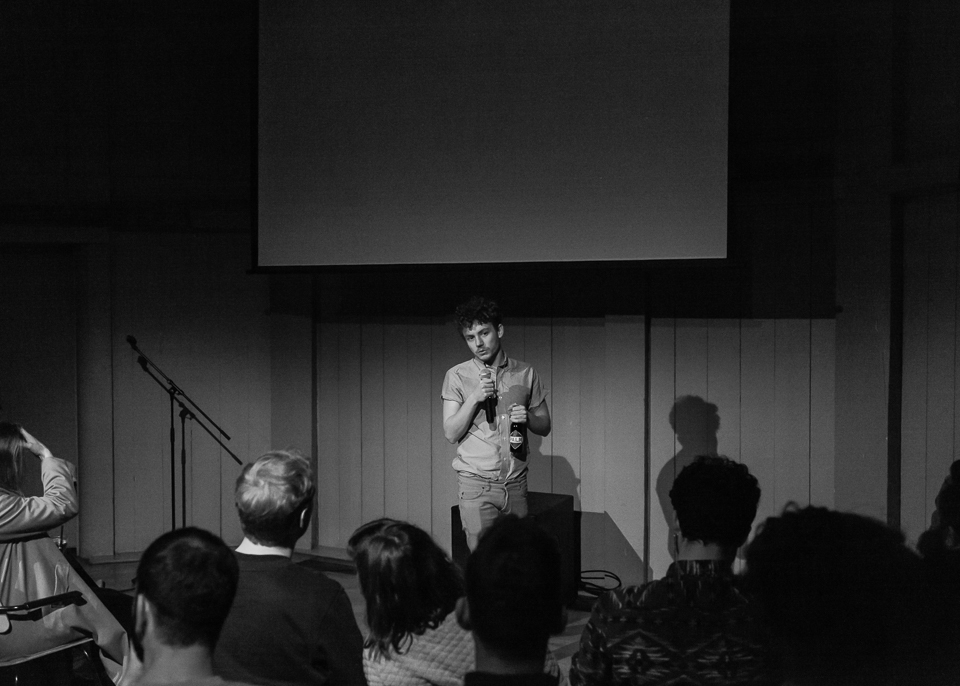The event was held at the very top of Waag Society, a random 15th-century castle-like building placed in the middle of Amsterdam’s Chinatown. Before starting to present an overall set of 7 artists, everybody involved in the structural side of things sat around a big table and shared a gigantic feast of Thai take-out. It was that precise, straightforward moment (especially if considering the cheap-yet-cute aspect of take-out) that established immediate familiarity amongst the many first-attenders (like myself) and Lost & Found locals. An autonomous sense of ease became the norm of the evening, noticeable even in the coolest bunch of the crowd. Because let’s face it: showing work — whether to known faces or complete strangers — never fully detaches itself from feeling vulnerable. It’s an act compromising an intimate, symbolical constellation that both parties involved (artist and audience) have to just tag along, and the less a sort of hierarchical power play is fetishised, the more accessible the discourse becomes. An alike fortunate situation materialised during the first minutes at that very table — suddenly it becoming clear that everybody was really just there to enjoy each other’s company. Both professionally and privately.
While the evening hosted artists from all types of backgrounds (like the Berlin-based writer Mirthe Berentsen interested in the construction of a romantic novel; the two smoothly-young visual artists Joeri Woudstra and Kevin Bray who both roam somewhere between the threshold of graphic design and 3D animation; or the Cuban Adrián Melis who in one of his works explores his father’s silent responses in regards to his country’s revolution), it was the overall intentionality of sharing work each artist genuinely cared for that made those +3 hours particularly memorable. Above all, refreshing.
If addressing a generic atmosphere within the arts, I think there’s an often encountered tendency to remain within some kind of safety ground, usually predicating itself around latest hypes. These days, for instance, some sort of referentialism which meanders alongside whatever post-internet trend alluded on Art Daily, etc.
It’s understandable to nest within a conventional/trendy standard, especially when it comes to wanting to be safely ‘liked’ for what we do. We all have been there at some point. Yet the experimentation for the unknown and, perhaps, the more instinctual gradually gets lost. Even though it’s not the case for everyone, there are people who’ve grown increasingly hesitant to nose-dive into a subject matter that might be located (during that specific time and place) outside of the current ins.
While I won’t say the works presented throughout the Lost & Found affair were mind-blowingly innovative in terms of their (often) aesthetically-conditioned framework (who cares about being original anyways these days), it was really the matter of content here that exposed the invited artists’ sober position: a playground without compromises.
Throughout presenting their latest accomplishments — whether it be Lotte Landman who gave a lecture based on a previous lecture she originally never attended; or Eva Papamargariti’s video which explored the physical gesture of touching displays — an innocuous take-it-or-leave-it attitude was successfully recovered. Or found, if we want to get metaphorical for a moment. That usually existent feeling of wanting to be accepted for one’s practice became secondary. Perhaps even non-existent. The evening gradually met its end when the formal stage turned into a dancefloor, to which Czech DJ Ventolin provided the tunes. And everybody just danced for a while until it was time to head home.
If I had to sum up the evening in one sentence, I’d translate it best to an especially enthusiastic book-club-meets-art scenario where all types of doers and listeners are welcomed. Lost & Found is a meditative platform that gives stage to artistic experiments where Hey, so this is what I’m into doesn’t re-enter the exhaustive discourse about the self in relation to others, but — for a change — remains in relation to itself.
